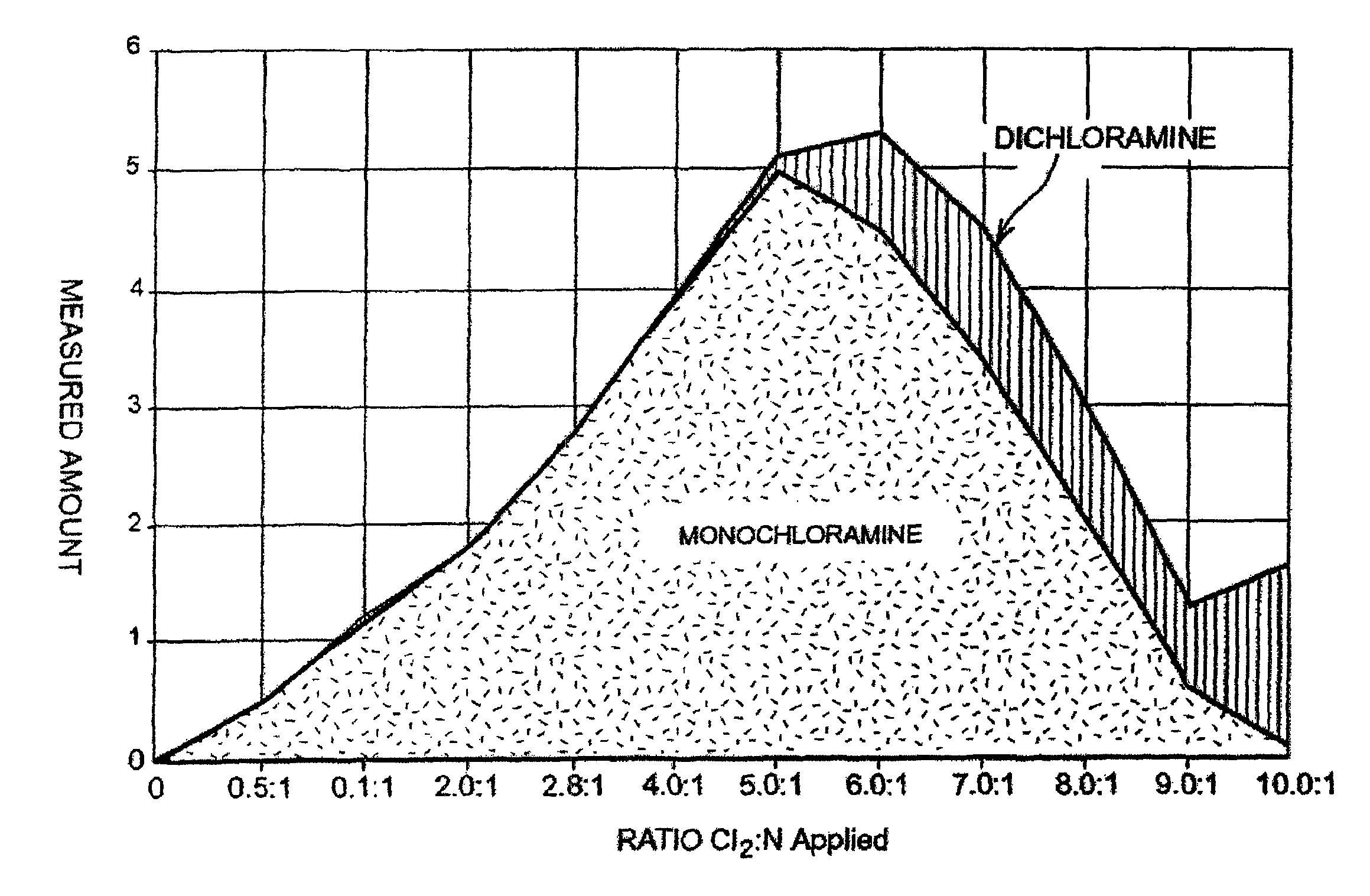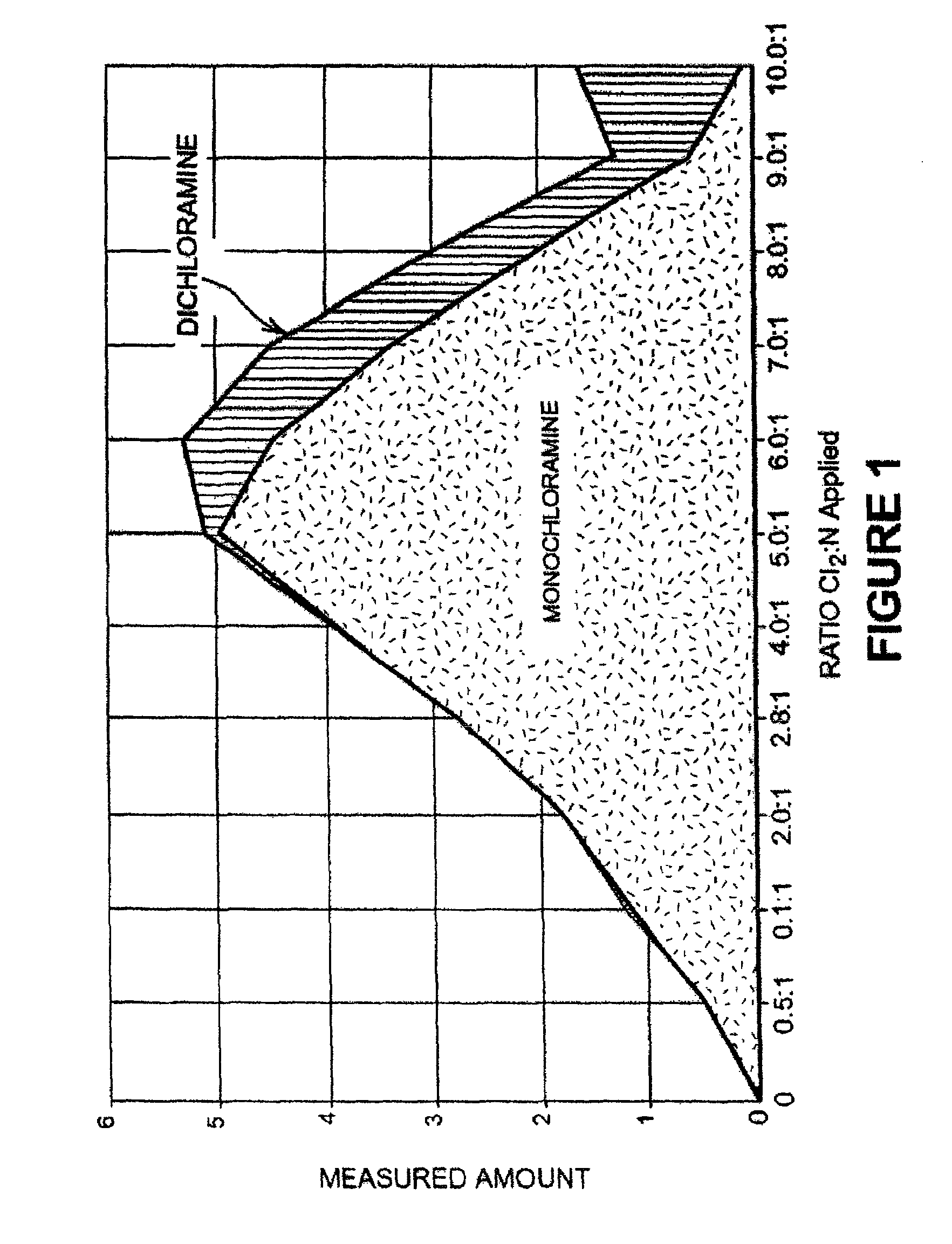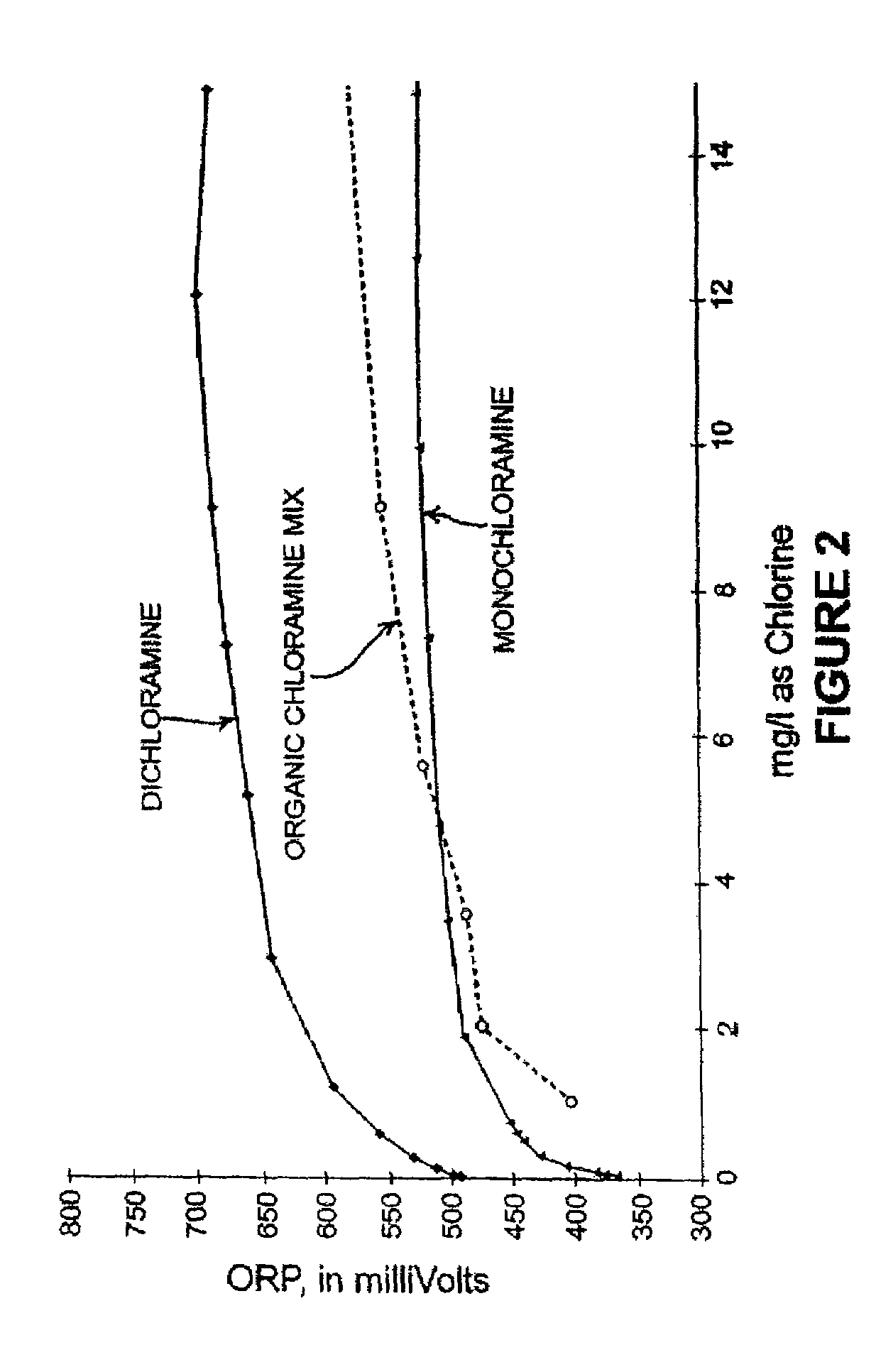Detection of free chlorine in water
a technology of free chlorine and water, applied in water/sewage treatment by oxidation, water treatment parameter control, instruments, etc., can solve the problems of reducing the total oxidant concentration of organic chloramines, affecting the disinfection effect of chlorine contact chambers of secondary treatment facilities, and affecting the disinfection effect of organic chloramines as a class, so as to prevent or reduce the over-estimation of free chlorine concentration values.
- Summary
- Abstract
- Description
- Claims
- Application Information
AI Technical Summary
Benefits of technology
Problems solved by technology
Method used
Image
Examples
Embodiment Construction
[0048]The water which may contain free chlorine may be rain water, ground water, drinking water, industrial process water, industrial effluent, pool water, sewage, sludge, grey water, spring water, aquifer water, sea water, tap water, irrigation water, agricultural feed water, glacial melt water, treated water, untreated water, steam or atmospheric humidity, and virtually any other sample containing H2O for which it is desired to know the concentration of free chlorine can be tested. The water to be tested can be originally in any form, including solid, liquid, gas, or plasma.
[0049]In some embodiments, the following reactions are employed to determine the concentration of free chlorine in water.
Monochloramine Formation:
NH3+Cl2→NH2Cl+HCl
NH3+HOCl→NH2Cl+H2O
Benzoquinone Monoimine Formation:
[0050]
Indophenol Formation:
[0051]
[0052]Ammonia may be added to a sample of the water to be tested to react with the free chlorine therein. The added ammonia may be in a molar amount equal to or greate...
PUM
| Property | Measurement | Unit |
|---|---|---|
| concentrations | aaaaa | aaaaa |
| ionic strength | aaaaa | aaaaa |
| ionic strength | aaaaa | aaaaa |
Abstract
Description
Claims
Application Information
 Login to View More
Login to View More - R&D
- Intellectual Property
- Life Sciences
- Materials
- Tech Scout
- Unparalleled Data Quality
- Higher Quality Content
- 60% Fewer Hallucinations
Browse by: Latest US Patents, China's latest patents, Technical Efficacy Thesaurus, Application Domain, Technology Topic, Popular Technical Reports.
© 2025 PatSnap. All rights reserved.Legal|Privacy policy|Modern Slavery Act Transparency Statement|Sitemap|About US| Contact US: help@patsnap.com



